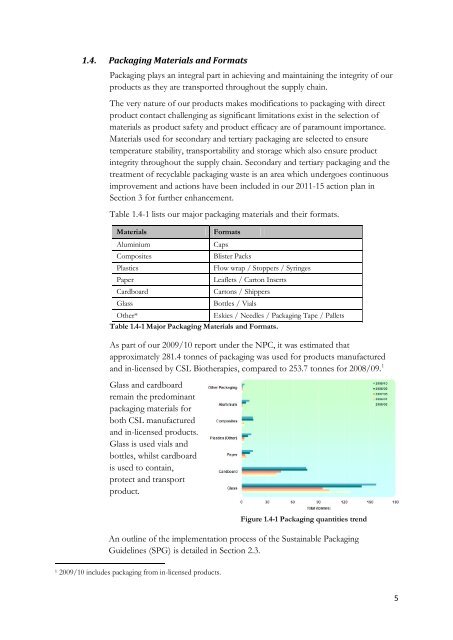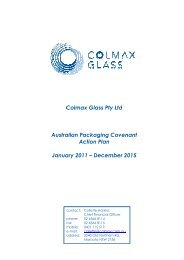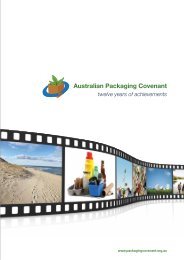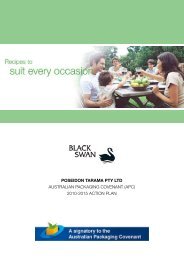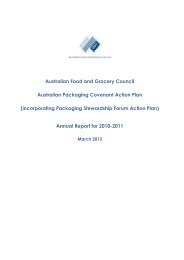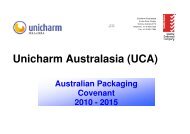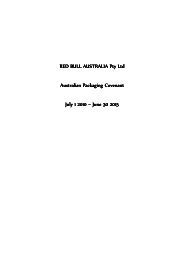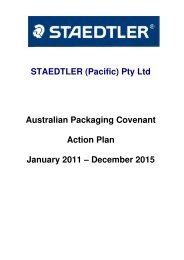Download Action Plan - Australian Packaging Covenant
Download Action Plan - Australian Packaging Covenant
Download Action Plan - Australian Packaging Covenant
Create successful ePaper yourself
Turn your PDF publications into a flip-book with our unique Google optimized e-Paper software.
1.4. <strong>Packaging</strong> Materials and Formats<br />
<strong>Packaging</strong> plays an integral part in achieving and maintaining the integrity of our<br />
products as they are transported throughout the supply chain.<br />
The very nature of our products makes modifications to packaging with direct<br />
product contact challenging as significant limitations exist in the selection of<br />
materials as product safety and product efficacy are of paramount importance.<br />
Materials used for secondary and tertiary packaging are selected to ensure<br />
temperature stability, transportability and storage which also ensure product<br />
integrity throughout the supply chain. Secondary and tertiary packaging and the<br />
treatment of recyclable packaging waste is an area which undergoes continuous<br />
improvement and actions have been included in our 2011-15 action plan in<br />
Section 3 for further enhancement.<br />
Table 1.4-1 lists our major packaging materials and their formats.<br />
Materials<br />
Aluminium<br />
Composites<br />
Plastics<br />
Paper<br />
Cardboard<br />
Glass<br />
Formats<br />
Caps<br />
Blister Packs<br />
Flow wrap / Stoppers / Syringes<br />
Leaflets / Carton Inserts<br />
Cartons / Shippers<br />
Bottles / Vials<br />
Other*<br />
Eskies / Needles / <strong>Packaging</strong> Tape / Pallets<br />
Table 1.4-1 Major <strong>Packaging</strong> Materials and Formats.<br />
As part of our 2009/10 report under the NPC, it was estimated that<br />
approximately 281.4 tonnes of packaging was used for products manufactured<br />
and in-licensed by CSL Biotherapies, compared to 253.7 tonnes for 2008/09. 1<br />
Glass and cardboard<br />
remain the predominant<br />
packaging materials for<br />
both CSL manufactured<br />
and in-licensed products.<br />
Glass is used vials and<br />
bottles, whilst cardboard<br />
is used to contain,<br />
protect and transport<br />
product.<br />
Figure 1.4-1 <strong>Packaging</strong> quantities trend<br />
An outline of the implementation process of the Sustainable <strong>Packaging</strong><br />
Guidelines (SPG) is detailed in Section 2.3.<br />
1 2009/10 includes packaging from in-licensed products.<br />
5


